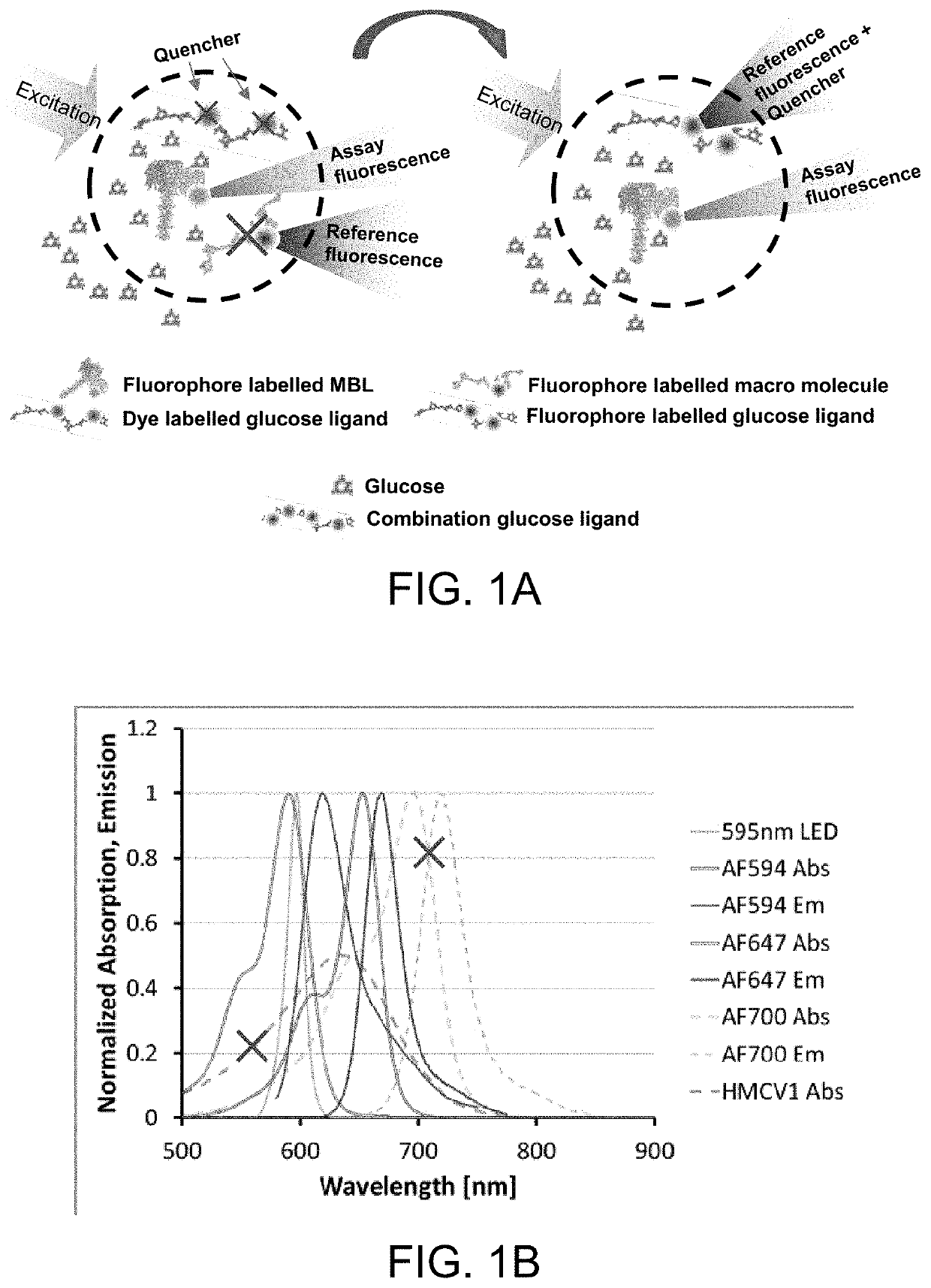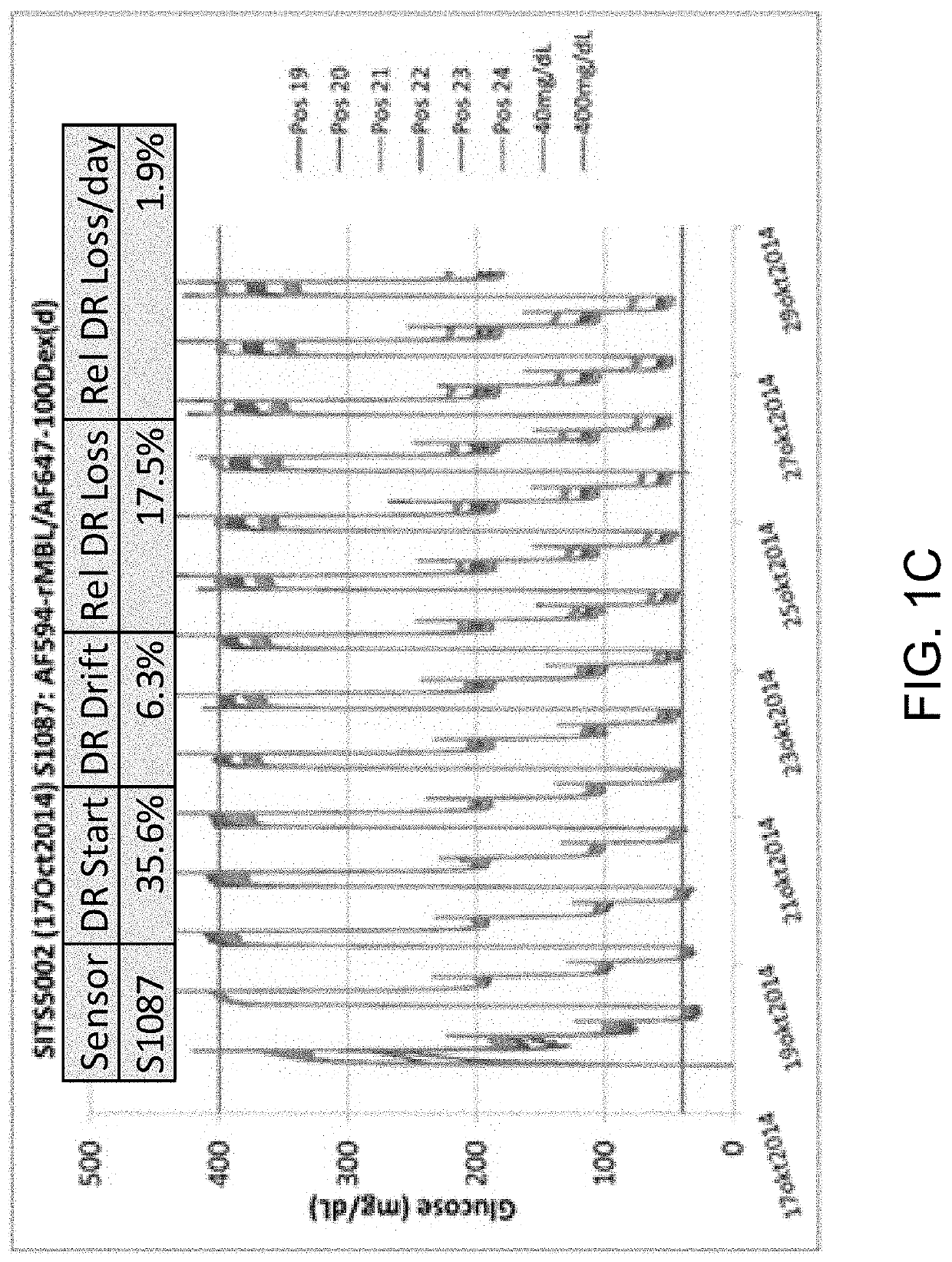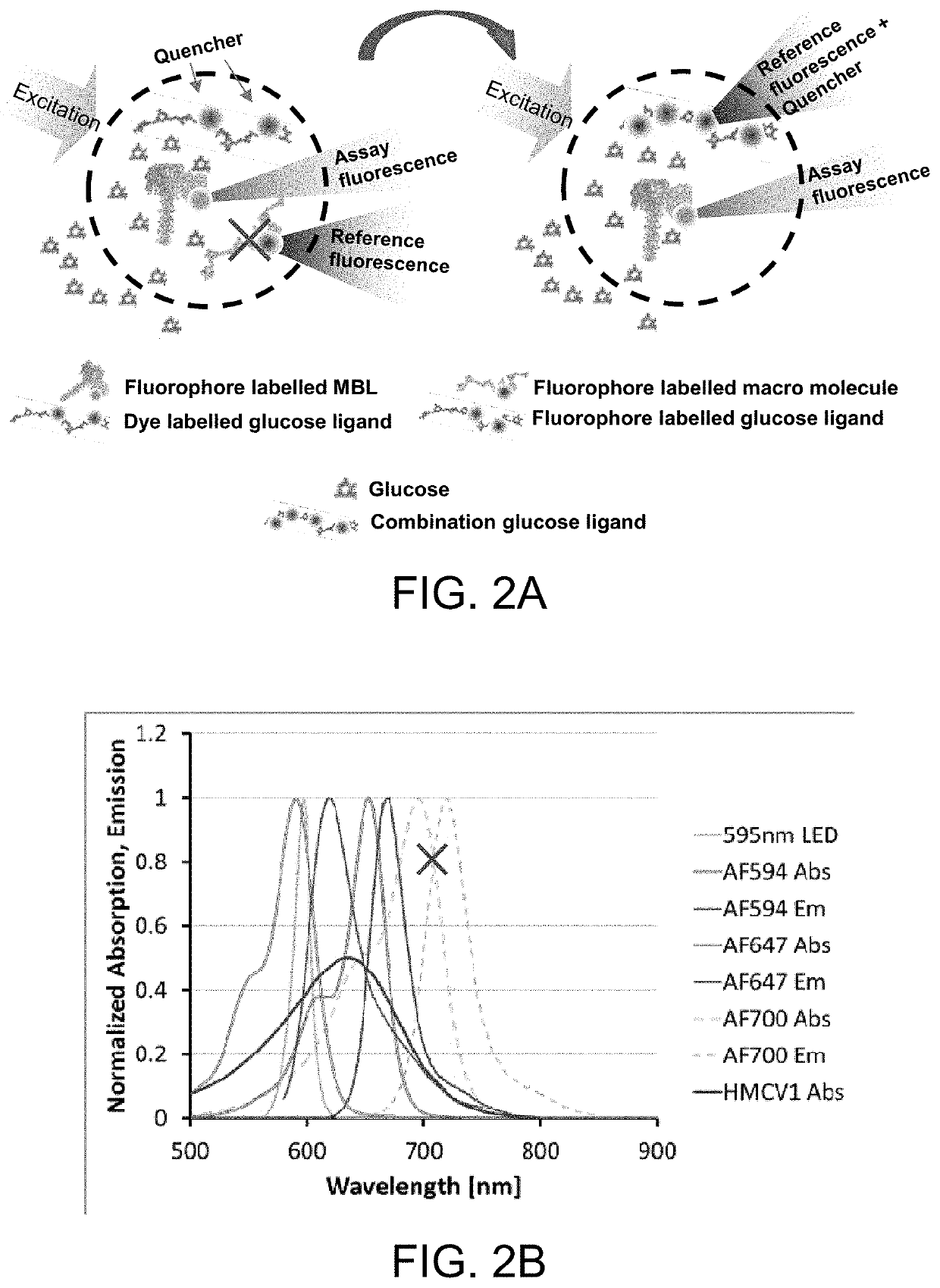Modified-dextrans for use in optical glucose assays
a glucose assay and optical technology, applied in the field of optical glucose assays, can solve the problems of adverse changes in the binding ability of dextran to the glucose receptor, affecting the efficiency of förster resonance energy transfer (fret), and the precipitation of these molecules, so as to increase the stability of the reference fluorophore and the assay complex as a whole.
- Summary
- Abstract
- Description
- Claims
- Application Information
AI Technical Summary
Benefits of technology
Problems solved by technology
Method used
Image
Examples
example 1
ive Multi-Labeled Dextrans Generated
HMCV1-AF647-Dextran
[0089]Dextran carrying both HMCV1 quencher dye and AF647 fluorophore. Both HMCV1 and AF647 acts as quencher to the AF594 donor in the glucose sensing assay. AF647 also functions as reference in the system. The emitted fluorescence from the direct excitation from the light source is much larger than the glucose dependent fluorescence origin from the FRET in the system.
HMCV1-AF700-Dextran
[0090]Dextran carrying both HMCV1 quencher dye and AF700 fluorophore. HMCV1 acts as quencher to the AF594 donor in the glucose sensing assay. AF700 functions as reference in the system.
HMCV1-HMCV3-Dextran
[0091]Dextran carrying both HMCV1 quencher dye and HMCV3 quencher dye. HMCV3 is a negatively charged version of HMCV1 (that is positively charged). Both HMCV1 and HMCV3 acts a quencher to the AF594 donor in the glucose sensing assay. A reference is needed in the system e.g. heavily succinylated AF700-Dextran.
HMCV1-Dextran-succinlylated
[0092]Dextra...
example 2
t with Blue-Shifted Reference Fluorophore
[0093]In the glucose responding assay, the assay has traditionally been built from two or three conjugates. Option 1 (three ligands) using red-shifted reference: AF594-rMBL, HMCV1-100Dex(d), AF700-100Dex(a)succ; AF700 on the non-binding Dex(a)succ acts as a reference. Option 2 (two ligands) using red-shifted reference: AF594-rMBL, HMCV1-AF647-100Dex(d); AF647 on the binding Dex(d) will act a reference since the fluorescence from direct excitation is much stronger than the fluorescence originating from the FRET. Changing the system to a blue-shifted reference becomes: AF647-rMBL and HMCV1-AF594-100Dex(d), resulting in better stability and lower calibration frequency of the optical sensor.
[0094]The assay was been built but unfortunately the AF594-DOL of the HMCV1-AF594-100Dex(d)(6.0 / 6.3) was far too large (SITS6017). This resulted in full saturation in both the REF and ASY channel during testing. New assays were made, but not tested (closing of...
PUM
| Property | Measurement | Unit |
|---|---|---|
| wavelength | aaaaa | aaaaa |
| wavelength | aaaaa | aaaaa |
| weight | aaaaa | aaaaa |
Abstract
Description
Claims
Application Information
 Login to View More
Login to View More - R&D
- Intellectual Property
- Life Sciences
- Materials
- Tech Scout
- Unparalleled Data Quality
- Higher Quality Content
- 60% Fewer Hallucinations
Browse by: Latest US Patents, China's latest patents, Technical Efficacy Thesaurus, Application Domain, Technology Topic, Popular Technical Reports.
© 2025 PatSnap. All rights reserved.Legal|Privacy policy|Modern Slavery Act Transparency Statement|Sitemap|About US| Contact US: help@patsnap.com



